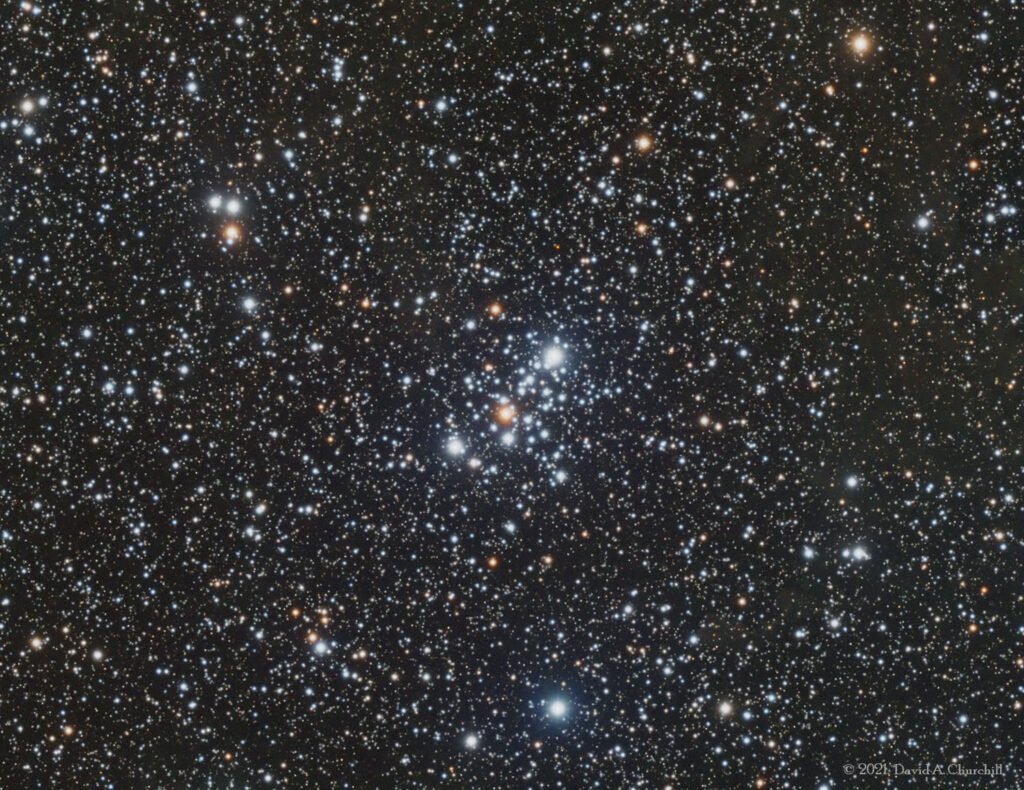Messier 103
Open Cluster, Cassiopeia
- Description
- Technical
- Links
Messier 103 (also known as M103, or NGC 581) is an open cluster where a few hundred, mainly very faint, stars figure in Cassiopeia. It was discovered in 1781 by Charles Messier’s friend and collaborator Pierre Méchain. It is one of the more distant open clusters, 8,000 to 9,500 light-years from the solar system and ranging over about 15 light years. It holds about 40 certain-member stars, two of which have magnitudes 10.5, and a 10.8 red giant, which is the brightest within the cluster. A bright known foreground object is the star Struve 131, not a member of the cluster. The cluster may have 172 stars if including those down to 50% probability of a gravitational tie. M103 is about 25 million years old.
Telescope: Astro Physics 175EDF f8.3
Mount: Astro Physics 3600GTO “El Capitan”
Camera: SBIG STT8300
Guider: Mini Borg 50 / SBIG STi
R: 18×10 mins = 180 mins, G: 18×10 mins = 180 mins, B: 18×10 mins = 180 mins
Total Imaging Time: 9h 00m
Data Imaged remotely over 2 nights during November 2020.
Data acquisition & Processing by David Churchill.
None

